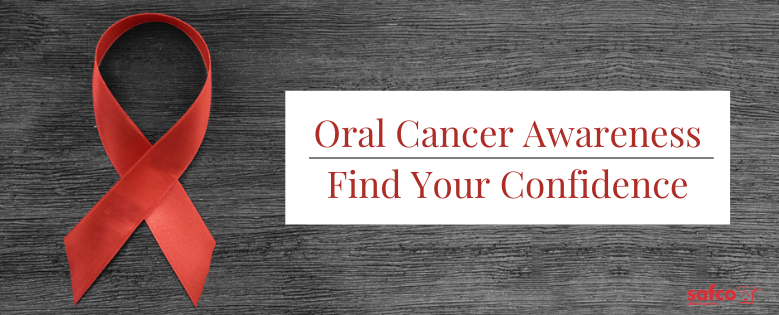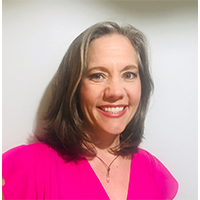|
Written by Amanda Hill |
Written On April 12, 2021 |

This April, we are observing the 22nd Annual Oral Cancer Awareness Month. This month is set aside to raise awareness on the importance of performing head and neck cancer screenings. As dental professionals, this is our time to shine. But do you feel confident in your skills? I know I had some questions about how to know I was doing the best for my patients. So I reached out to expert Susan Cotten, BS, RDH, OMT, an Oral Cancer Consulting owner.
Susan has been educating dentistry with the “Cotten Method,” a comprehensive office system specific to oral cancer, to build confidence in screening, aid in reducing liability, and build the dental team. And helping professionals like me feel more confident in our skills, verbiage, and knowledge!
Oral Cancer Today
Amanda: What are the current oral cancer statistics?
Susan: The Oral Cancer Foundation reports that in 2021 approximately 54,000 Americans will be diagnosed with oral or oropharyngeal cancer, that is, 147 Americans every day and six every hour… and in five years, only a little more than half of those diagnosed will be alive. White, non-smoking males are most at risk for Human Papillomavirus/HPV oropharyngeal cancer, 4-1 over women. It is important to note that HPV affects the oropharynx. Very rarely does it involve the oral/anterior portion of the mouth. HPV oropharyngeal cancer is considered an epidemic.
Frequency
Amanda: How often should we be screening for oral cancer?
Susan: EVERY VISIT – EVERY PATIENT! From their very first visit to their very last, regardless of age and perceived risk.
Screening Aids
Amanda: Should we be using aids like Oral ID or Velscope, and if so, how often?
Susan: The adjunct devices are just that, adjuncts to the gold standard – Extraoral and Intraoral exam (EOIO). Adjuncts should never take the place of the EOIO. The ADA position is: “The guideline does not recommend the use of salivary or light-based adjuncts for evaluating lesions for malignancy.”
“The panel does not recommend autofluorescence, tissue reflectance, or vital staining adjuncts for the evaluation of potentially malignant disorders among adult patients with clinically evident, seemingly innocuous or suspicious lesions.” ADA website.
Do I personally believe we should use them? Yes. I believe we should use all we have at our disposal. The wrong reason to use an adjunct is purely for production.
What to do?
Amanda: What the best screening protocol?
Susan: Best practices/protocol is the thorough visual and tactile head and neck, oral, oropharyngeal cancer evaluation. The oral cancer evaluation is not just the hands-on visual and tactile evaluation. We know possible signs and symptoms, we should ask our patients if they are experiencing any of these. We know risk factors; we should be inquiring about all the risk factors. In their 2017 oral cancer guidelines, the ADA also stated, “Clinicians should obtain an updated medical, social, and dental history and perform an intraoral and extraoral conventional visual and tactile examination in all adult patients.”
Here’s a great step by step instruction Susan wrote for RDH magazine last year:
What is wrong in a screening?
Amanda: What are most people getting wrong in the Oral Cancer Screening?
Susan: I wouldn’t say that providers are getting things wrong; here is what I see after my years of coaching dental offices and providers in performing this evaluation, AND from my own personal experience.
- Don’t do it: Many dentists and dental hygienists are not confident in performing this evaluation. Therefore they don’t do it (yes, that’s correct, some providers do not perform an oral cancer evaluation) or don’t perform it consistently. We are humans. When we aren’t confident in something, avoidance is common. I have not always been confident in performing an oral cancer evaluation. That is a big reason I do what I do now.
- Time: Often, hygienists will report that they do not have the time to do all that we do now in the dental hygiene appointment. However, if time is of concern, this procedure should never be cut short or eliminated. I say that because I have personally cut this procedure short before having a patient as an oropharyngeal cancer survivor. She changed the importance I place on this procedure.
- Production: While this evaluation requires more than it once did (compared to what I learned in hygiene school), there is no reimbursement for the time taken to do this life-saving evaluation. YET, the adjunct device that the ADA does not recommend has a code for submission and possible reimbursement. The Oral Cancer Evaluation needs a separate code for the metrics. The oral cancer evaluation is currently listed as part of the comprehensive exam, periodic exam, and the periodontal exam. We know the oral cancer evaluation is performed at times when these exams are not performed, so we have no way to track that it was done and to gather data on this life-saving evaluation.
What needs to change?
Amanda: How can we do better?
Susan:
- ADA Code Maintenance Committee/CMC can approve a code for this evaluation. A submission was made by Dental Codeology Consortium in 2020 to the CMC; it was not approved. Medical cancer screenings/evaluations have codes. Why not dentistry’s cancer?
- Regular Required Education: I am advocating for every two years required didactic education and hands-on review of the visual and tactile EOIO. We are required to have BLS/CPR education and hands-on training every two years for our license… in case we need to use it, we are confident and prepared……. We perform the oral cancer evaluation multiple times every day, yet many providers do not feel confident; this is from new graduates to seasoned professionals. All dentists and hygienists should feel confident in performing this procedure.
- If you don’t feel confident in performing this screening, that’s ok. However, please don’t continue with a lack of confidence. Reach out for coaching.
Just Do it
Here’s your chance to head back into the operatory with newfound confidence to know you are doing the very best oral cancer assessment for every patient confidently. Just the stats alone are enough to remind us how critical this exam is to every appointment. Empower everyone in your office to know what to look for and how to follow up. You could save a life!

Amanda Hill, RDH, BS has been in the dental industry for over 30 years, she earned her B.S. in Dental Hygiene at Old Dominion University in Norfolk, Virginia and has had the opportunity to experience dentistry around the world. Amanda has a love for learning and is obsessed with continuing education in all its many forms. Amanda practices part time clinically and is an industry educator for the nation’s largest dental job board, DentalPost.net. Amanda is a proud Navy spouse and mom of 3.